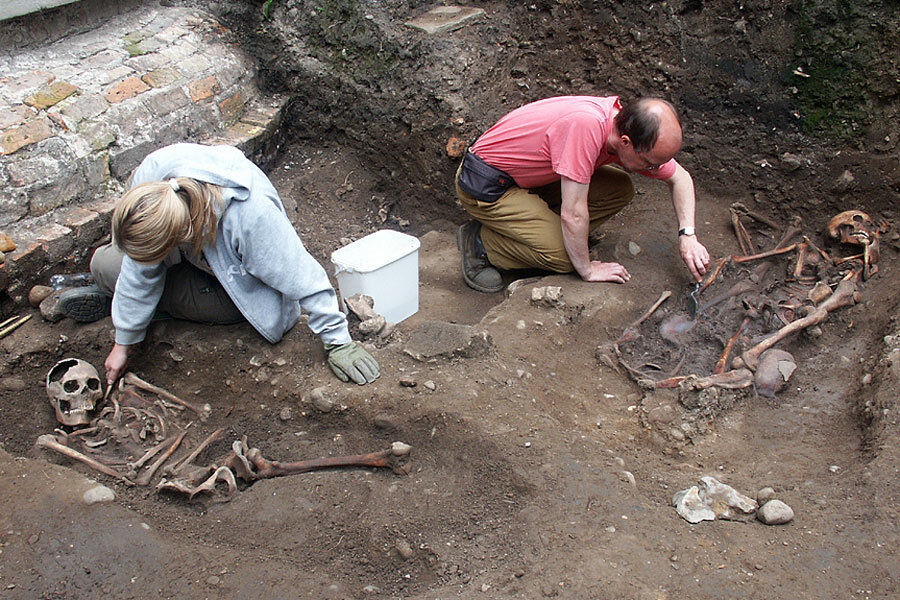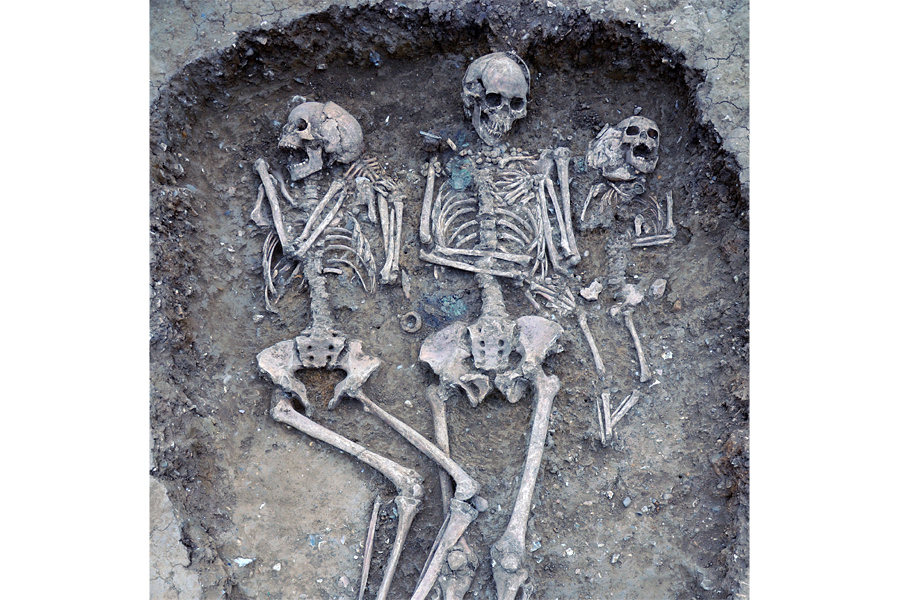Where did the British come from? Ancient DNA holds clues.
Loading...
From about 300 AD to 700 AD, Europe was on the move, founding new civilizations and felling old ones. Historians have long relied on written and material artifacts to explain Europe's so-called Migration Period, but it turns out that the story is also written in Europeans' genes.
In a pair of new studies, scientists looked into the genomes of those Europeans of antiquity to gain a better understanding of their influence on the islands of Great Britain and Ireland. One team looked at samples from the time when the Roman Empire's northern reaches stretched as far as Britain, while the other looked at the next big influence: Germanic tribes migrating from mainland Europe after the Fall of Rome. Both studies are the subject of papers published Tuesday in the journal Nature Communication.
Although the Roman Empire incorporated peoples from far and wide, this new research suggests that Roman genetics were not significantly mixed into the British population. But when the Anglo-Saxon migrations began around 400 AD, these later immigrants mixed more with the resident populations.
"Together they tell a story of about 1,000 years of British history," Stephan Schiffels, lead author of the paper examining Anglo-Saxon migration tells The Christian Science Monitor in an interview.
Roman rule left little genetic trace
At its peak, the Roman Empire stretched from Eastern Europe into the Middle East and from Britain down into the Sahara. Such a vast empire would have made it easier for people to move across long distances, and such migrations would likely yield genetically mixed populations across the empire. Or so researchers thought.
But in Britain, it seems that outsiders didn't intermingle or settle down much, according to the new research.
"Despite the fact that the Romans were a very cosmopolitan world, with lots of people moving around," Matthew Collins, co-author of the Roman-era study, tells the Monitor in an interview, "Most of the people that got killed and were buried in the cemetery that we've analyzed have what appears to be a local signal."
Dr. Collins was part of an interdisciplinary team examining remains found in a Roman-era cemetery in York, as well as some earlier and later ones for context.
Unearthed in 2004 and 2005, the Roman-era skeletons were first thought to be soldiers hailing from afar. All were young men and many had been decapitated, with their heads buried alongside their bodies.
Their unusual burial led to a lot of speculation, Collins says. Previously scientists have asserted that these were Roman soldiers from other reaches of the empire, but this new study identifies them as all of local, Celtic genetics. Only one of the specimens in this study was not from Britain and ancient DNA analysis identified him as from the Middle East.
Perhaps these men were recruited by the Romans, and participated in skirmishes as gladiators. Or maybe they were the victims of a violent encounter. Collins says it'll take a suite of artifacts, literature, and specimens like these to better explain the young men's demise.
What is clear in this study is that the Romans didn't leave much of a genetic mark on the British population. Through the Roman empire, Collins says, "There was a great deal of continuity with the Iron Age community."
"The idea is that the Roman world was a world of mobility but actually in Britain, it's the Anglo-Saxons that are making the big difference. They're the people coming in."
Anglo-Saxons intermingled
The influence of the Anglo-Saxon migrations has been debated among the scientific community, Dr. Schiffels says. For some, it was a question of whether it was simply ideas and culture being transmitted or if actual populations of people migrated to Britain from mainland Europe.
"We have for the first time now direct evidence," Schiffels says.
By comparing ancient DNA samples with modern samples from both Britain and parts of mainland Europe, "we estimate that on average the contemporary East English population derives 38% of its ancestry from Anglo-Saxon migrations," the researchers write in their paper.
Schiffels says this might look different in other parts of Britain that saw less of the migration, or the migration of different Germanic tribes.
Some researchers had previously thought that the Anglo-Saxons "came in and created this elite structure which didn't interact with the indigenous population," explains Schiffels. But when the team sampled individuals from what was thought to be a purely Anglo-Saxon graveyard, they found that some of the skeletons were actually more Celtic. One was even a mixture of the two genetic backgrounds.
A migration story
Taken together, the two studies tell a tale of population migrations and their influence in Britain.
Michael Weale, a statistical and population geneticist at King's College London who was not involved in the study, tells the Monitor in an email that there has been an "on-going debate between historians, geneticists and others about the extent to which historical changes in culture correspond to historical migration events (and if so, how big these migration events might be)."
"To take a modern counter-example, there's a McDonalds in almost every capital in the world, but this doesn't mean there's been a mass migration of Americans, so this is an example of how cultures can change without migration," he explains.
Genetic research is a good way to answer questions about these migrations because DNA holds clues into a person's ancestry, Dr. Weale says. "Every one of us is an amalgam of the DNA of all our ancestors (a number which increases exponentially going back in time), so a single genome can in fact give us an average picture about a large group of people (i.e. about that person's ancestors)," he explains.
So even though these studies look at just a handful of ancient individuals' genomes, Weale says, "It actually gives us a window into population-scale events and histories."
By combining modern and ancient DNA analysis, these two new studies help focus in on the impact of these historical migrations, Weale says.
"We can now say for sure that the Romans did not leave much of a trace and did not contribute much to the British gene pool," Schiffels says. "But the Anglo-Saxons did greatly so."










